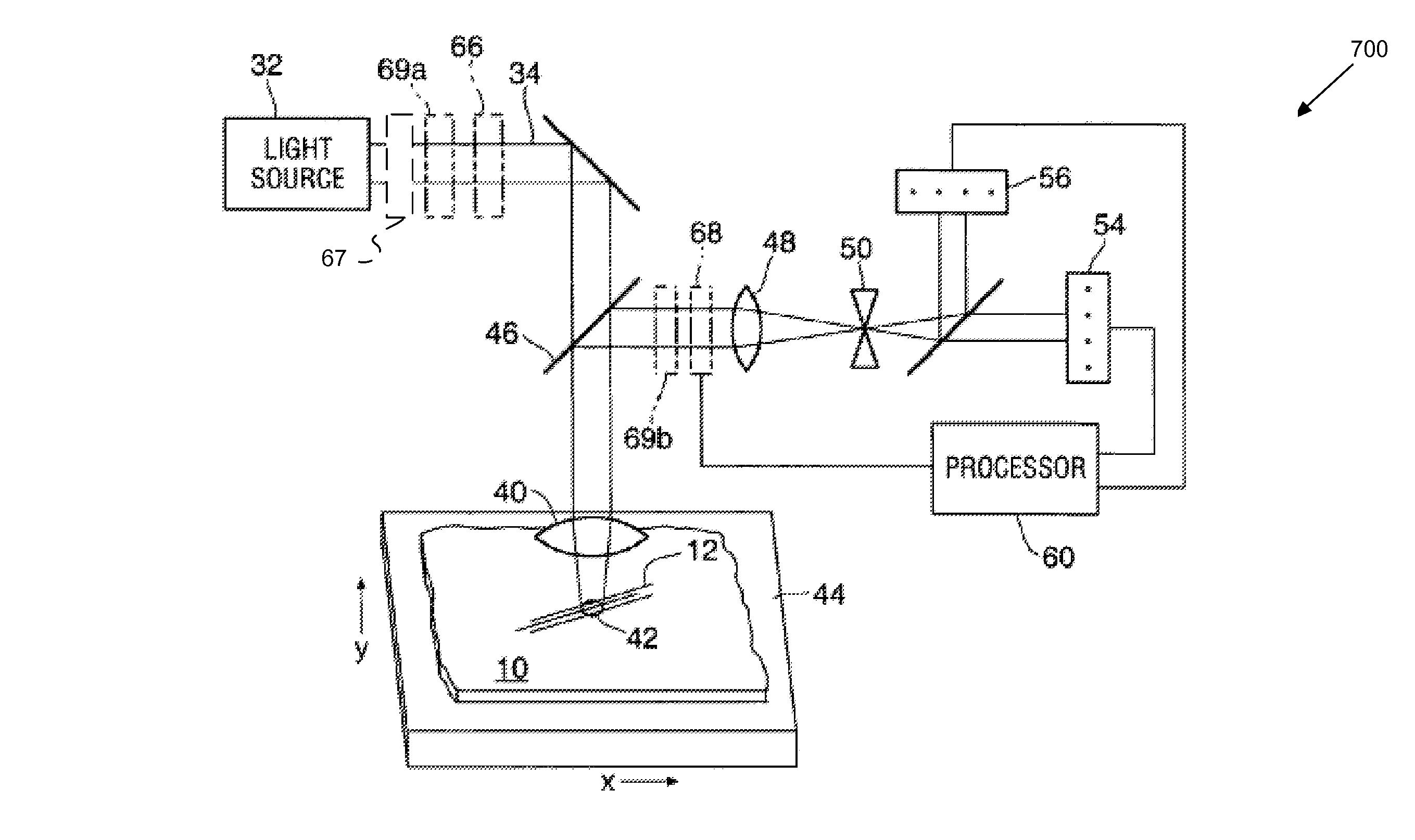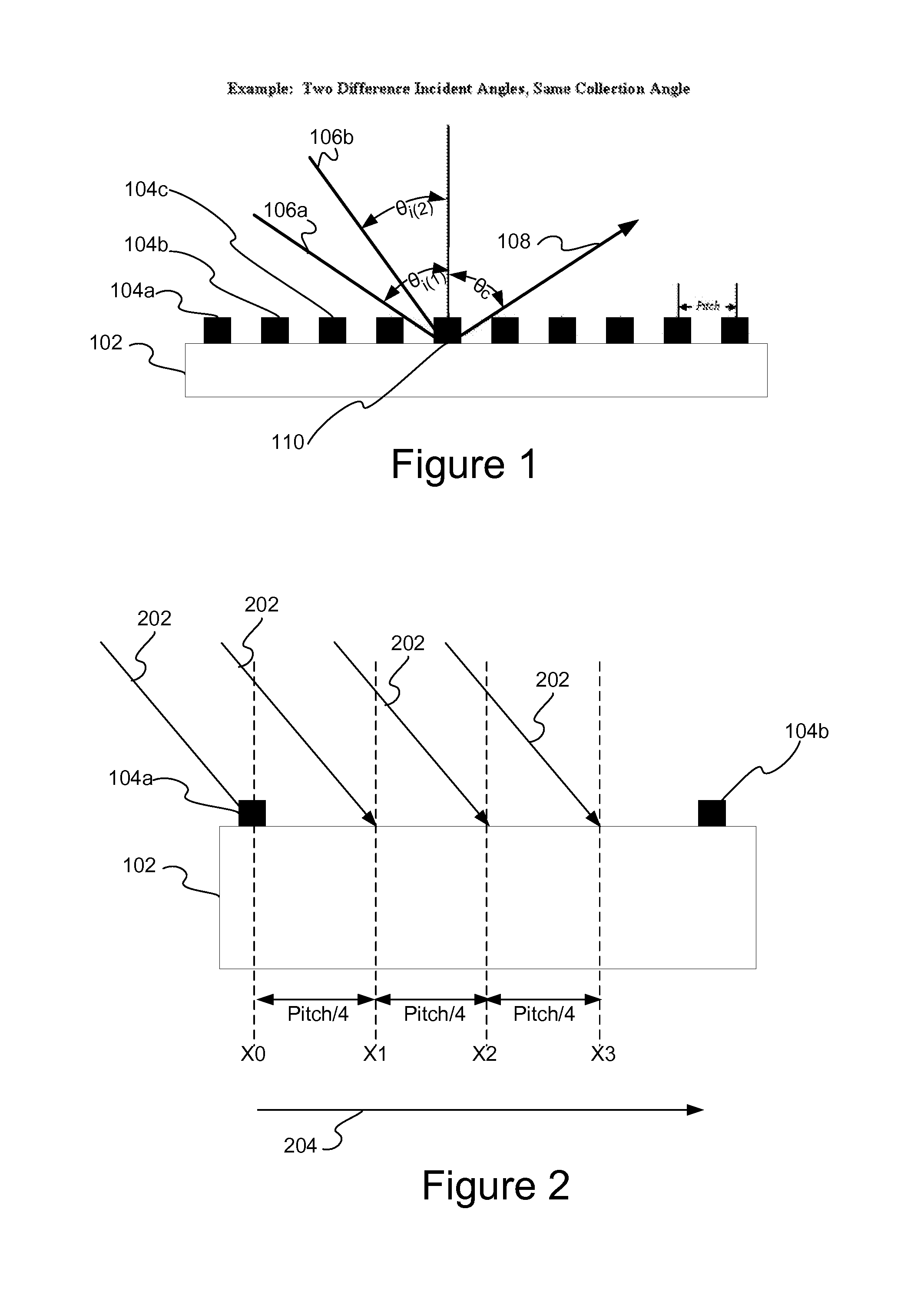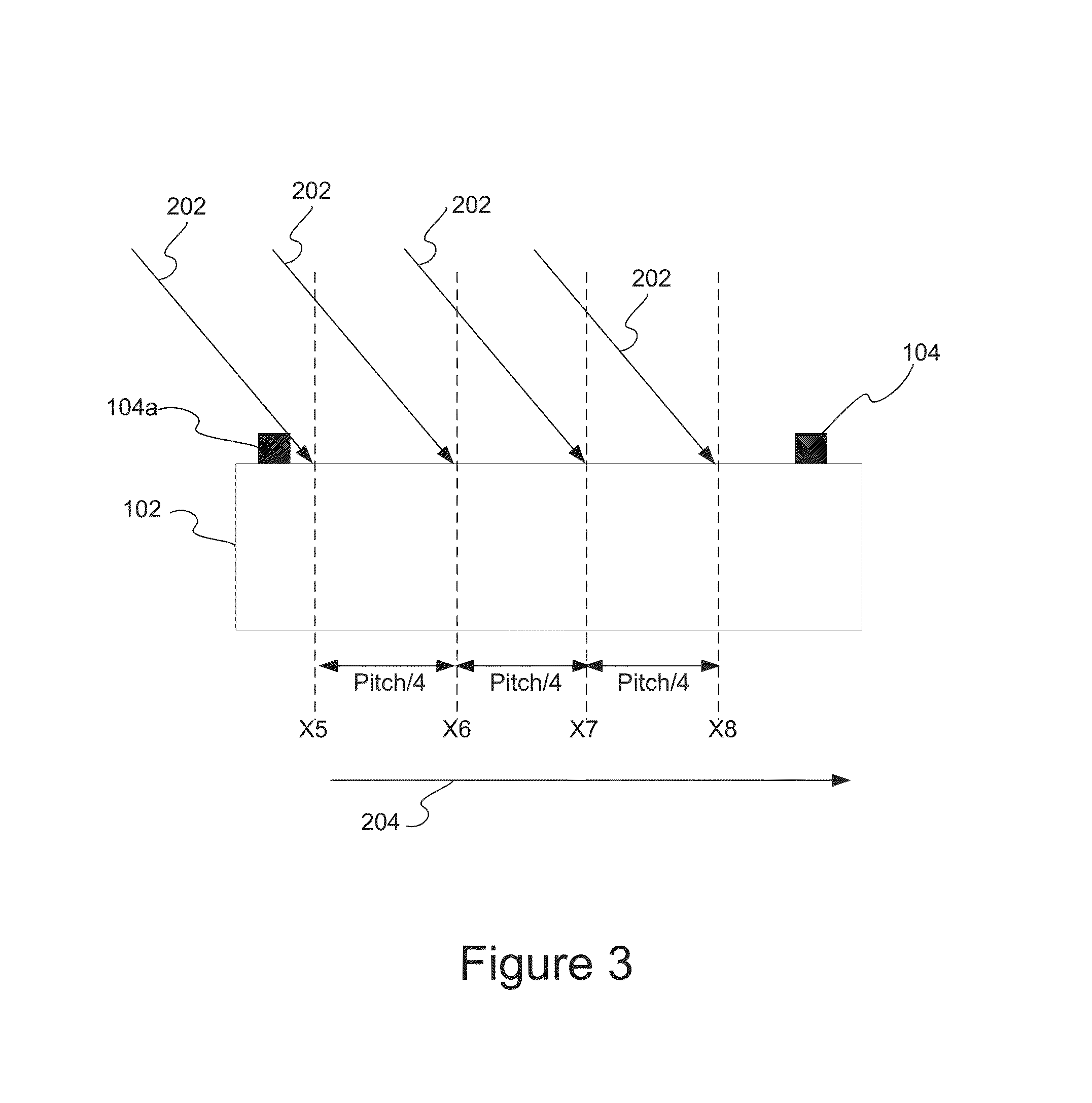Optical metrology of periodic targets in presence of multiple diffraction orders
a technology of diffraction order and optical metrology, which is applied in the direction of semiconductor/solid-state device testing/measurement, instruments, photomechanical equipment, etc., can solve the problem of insufficient ability to calculate separate diffraction orders to accurately or reliably fit measured data, and more interference terms in the reflected signal
- Summary
- Abstract
- Description
- Claims
- Application Information
AI Technical Summary
Benefits of technology
Problems solved by technology
Method used
Image
Examples
Embodiment Construction
[0020]In the following description, numerous specific details are set forth in order to provide a thorough understanding of the present invention. The present invention may be practiced without some or all of these specific details. In other instances, well known component or process operations have not been described in detail to not unnecessarily obscure the present invention. While the invention will be described in conjunction with the specific embodiments, it will be understood that it is not intended to limit the invention to the embodiments.
INTRODUCTION
[0021]A beam profile reflectometry (BPR) example will first be described to illustrate challenges with processing optical signals having multiple diffraction order content. In a BPR system, a probe beam can be focused with a strong lens so that the rays within the probe beam strike a target at multiple angles of incidence. FIG. 1 illustrates a simplified BPR example having two rays of a probe beam at two different angles of inc...
PUM
| Property | Measurement | Unit |
|---|---|---|
| angles of incidence | aaaaa | aaaaa |
| diameter | aaaaa | aaaaa |
| optical signal | aaaaa | aaaaa |
Abstract
Description
Claims
Application Information
 Login to View More
Login to View More - R&D
- Intellectual Property
- Life Sciences
- Materials
- Tech Scout
- Unparalleled Data Quality
- Higher Quality Content
- 60% Fewer Hallucinations
Browse by: Latest US Patents, China's latest patents, Technical Efficacy Thesaurus, Application Domain, Technology Topic, Popular Technical Reports.
© 2025 PatSnap. All rights reserved.Legal|Privacy policy|Modern Slavery Act Transparency Statement|Sitemap|About US| Contact US: help@patsnap.com



